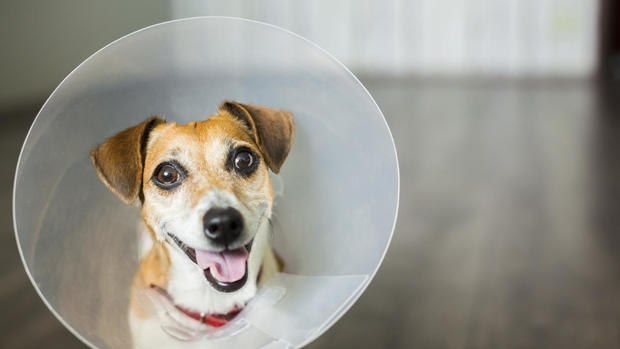What your dog’s vet bill says about America’s health care system
The U.S. health care system has been decried as wasteful, with blame heaped on everyone from greedy insurance executives to spendthrift patients. But what if Fido and Fluffy can help shed light on the steep rise in their owners’ medical costs?
That’s the question posed by Stanford University economists Liran Einar and Atul Gupta and Massachusetts Institute of Technology economist Amy Finkelstein in a new paper published at the National Bureau of Economic Research. The research points out that the pet health care industry shares a number of similarities with the system for humans, including a rapid increase in spending as a share of GDP and high spending at the end of life.
The side-by-side comparisons may offer insights into the factors driving up health care costs for people, the economists posit. That’s because insurance companies and government regulation are often blamed for the surge in those costs. Notably, however, spending trends are similar in the pet health care industry, even though it generally lacks both insurers and government regulation.
The comparison “should give us pause before attributing the large and rising health care costs in the U.S. solely to the prevalence of insurance and government involvement,” the researchers wrote. “The similar growth patterns in U.S. human and pet health care may also suggest that technological change in human health care may have spillover effects on related sectors, including perhaps pet health care or human care in other countries. “
Advancements in medical treatment may be saving more lives -- both of the two-legged and four-legged variety -- but they do come with higher costs. And with end-of-life care, humans are willing to spend more to receive treatment, both for themselves and their pets.
Medicare, for instance, in 2014 spent almost $35,000 per senior who died that year, or four times higher than the average cost per capita for seniors who didn’t pass away that year, according to the Kaiser Family Foundation. Interestingly, spending was highest for younger seniors. The most expensive end-of-care coverage was for 73-year-olds, who spent almost $44,000 for care during their last year of life. Ninety-five-year-olds, on the other hand, spent just $23,000 on health care during their last year of life.
A “60 Minutes” report found that about 20 to 30 percent of medical expenses during the last two months of a patient’s life might not make a meaningful difference.
“The unique spending patterns of the U.S. health care system [may] result from a combination of factors, some of which reflect specific institutional features of the American system, and some of which reflect ‘deeper primitives’ concerning individual preferences over health and health care or the nature of the supply-side of health care,” the authors noted.
American households didn’t significantly increase their spending on housing or entertainment between 1996 to 2012, the researchers found. Yet spending on human medical care was 50 percent higher in 2012 than in 1996, while spending on pet health care jumped 60 percent.
At the same time, employment for physicians and veterinarians has surged, jumping by 40 percent and 100 percent, respectively.
When it comes to end-of-life spending, the researchers examined dogs and humans who were diagnosed with lymphoma. While the dog sample was small -- they examined bills from one pet hospital that treated 44 dogs with lymphoma -- the trend was similar for both animal and human: “a distinct end-of-life spike in spending for both populations.”
While the researchers urge more experts to examine the issues raised by their paper, American families aren’t likely to get any relief soon when it comes to health care costs, either for themselves or their pets. Human health care spending is forecast to rise 5.8 percent a year through 2025, while the pet health care market is also expected to expand.
